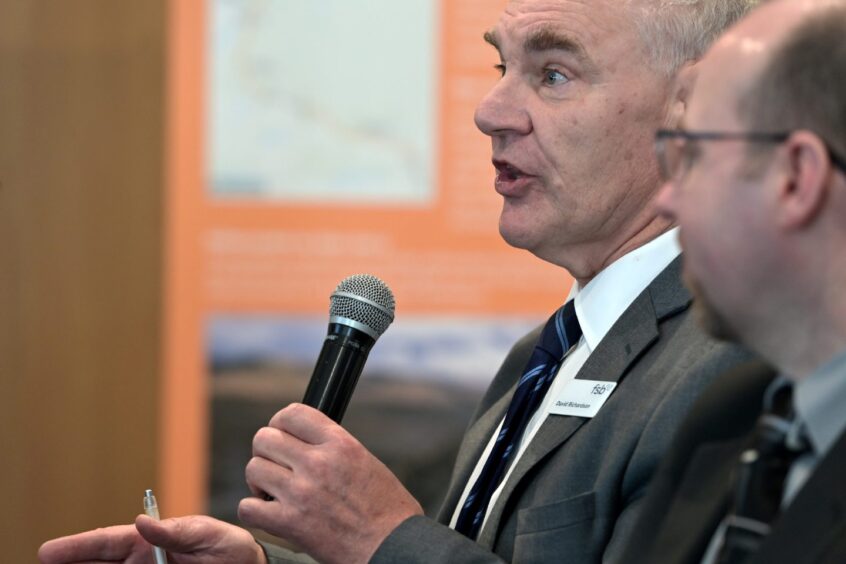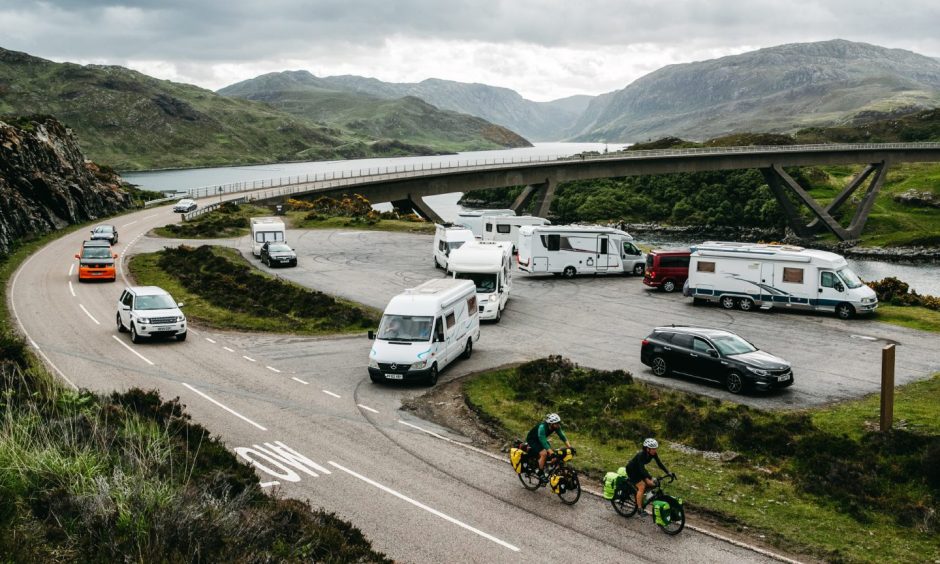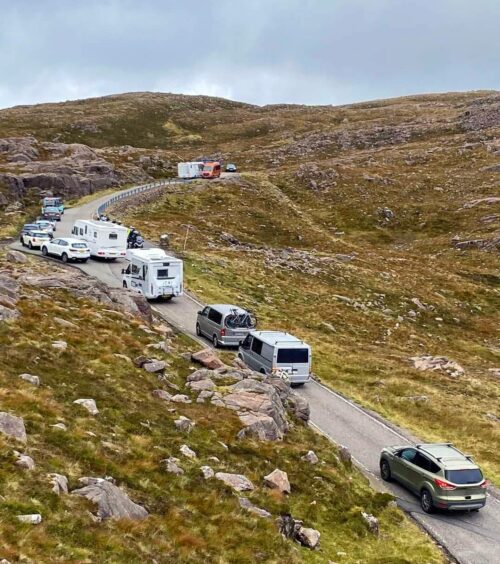As the North Coast 500 marks a decade of its existence, we asked The Press & Journal readers what changes they felt should be made to the iconic route.
The 516-mile coastal route was created in 2015 with the aim of promoting business growth in the northern Highlands.
North Coast 500 Ltd is the marketing firm behind “the ultimate road trip” and works closely with businesses and groups in order to “enhance the visitor experience”.
Readers said they want to see the route better managed and policed, more local engagement and some have even asked for the promotion to stop altogether.
But what does NC500 Ltd development manager David Richardson have to say on the matters? We sat down with him to find out.
Route needs better management
One of the issues raised by readers was better management of the North Coast 500, which many feel has given free-reign to visitors.
Readers believe campervans are causing several issues, with many lay-bys used as campsites.
Mr Richardson agrees there needs to be ways to enforce rules and regulations and has welcomed the return of Highland Council rangers.
He said: “Do we need better management? The short answer is yes.
“Nobody knew just how much the North Coast 500 would take off. It’s been hugely successful.
“And no-one could have foreseen the explosion in campervan ownership.
“So, we are going to discuss infrastructure, have we got the right infrastructure in place, have we got the right rules in place, and so on.
“You can also have all of the rules you like, but if no one is enforcing it then there’s no risk of getting caught. I understand that. So we need more enforcement, absolutely.
“It is also about education which we are very much involved in and have a visitor pledge which is all about encouraging responsible behaviour.
“There is unfortunately a small number of people who don’t have the education.
“Some think wild camping is anywhere that takes your fancy in a vehicle and we all know that it isn’t the case.
“We have had meetings with the chief executive of Highland Council, I am meeting MSPs and MPs talking about the issues which we face.
“It’s difficult because we are a non-profit organisation, we make a loss every year.”
NC500 Ltd launched its tourism pledge last year to tackle issues such as littering and speeding.
It wants tourists to respect the environment, support and engage with local communities and promote “responsible tourism”.
The route recently featured on Fodor’s Travel’s annual No List due to “downright disgusting overtourism”.
Do North Coast 500 changes come through local engagement?
Better engagement with locals from the marketing group was also raised by readers as a potentially positive change.
One reader hopes there’s a way to engage and “find a way for residents to embrace the change”.
Mr Richardson claims there is already plenty of local negotiations and conversations under way.
He said: “We’re talking to people all of the time. I’m going to Applecross, where I want to talk to people about how we can improve it.
“We are constantly listening, but at the end of the day we are a very small marketing organisation so there is only so much we can do.
“I know people want changes to the North Coast 500. We are engaging with everybody to try and bring people together. There’s no secrets.
“We work alongside others and are in communication with the council all the time. We want to make things better and work for everyone.”
Are locals and businesses benefitting?
Some readers raised concerns over who benefits from the route’s promotion, discussing litter, speeding and traffic as issues.
Mr Richardson said the route is designed to create more local opportunities and to prevent the “death” of smaller villages and settlements.
He added: “When discussions first took place over a route here, it was businesses who got together.
“They felt it was really important to the economy and the future of Highland tourism and so they tried to set something up.
“That was the understanding, the intention was always a partnership which would boost our economy.
“Some west coast schools have seen pupil numbers drop by more than 50% since the millennium.
“The question then becomes who wants to move their children to a school with a shrinking curriculum?
“We are trying to do something about that by creating a stronger economy in these parts. That way, locals and businesses benefit.
“If people don’t like it then we’d need to find another way for businesses to be successful in these regions.”
Studies have previously revealed the “absolutely incredible” impact of the route on tourism and business in the Highlands.
According to research for the Highlands and Islands Enterprise (HIE), in just the first two years local businesses were boosted by 15-20% year-on-year.
Should the marketing stop?
Should the marketing for the North Coast 500 stop? That’s the view of one reader, who believes no money is being invested in order to improve infrastructure.
Mr Richardson said several changes can be made to the NC500, but he believes it will “never go away”.
He said: “First of all, there is a perception that we are making huge profits out of the NC500.
“Nothing could be further from the truth in terms of NC500 Ltd, but this is not about making money for ourselves.
“I have a list of businesses who I have spoken to and they say the route has made a real difference and they wouldn’t be there without it.
“The route is sustaining existing businesses, encouraging more to set up and encouraging outside investment.
“If we stopped promoting the route, it has already become too popular to just disappear.
“So changes have to be made to the North Coast 500, we have to manage it better, get people to visit for longer, and many more things.
“But we certainly can’t turn the clocks back and things won’t go back to the way it was before this started.
“Nothing stands still, it goes forwards or backwards, and we believe this is our best chance at making things go forwards.”
Find more from The Press and Journal’s North Coast 500 series covering views of locals, business and more here.





Conversation